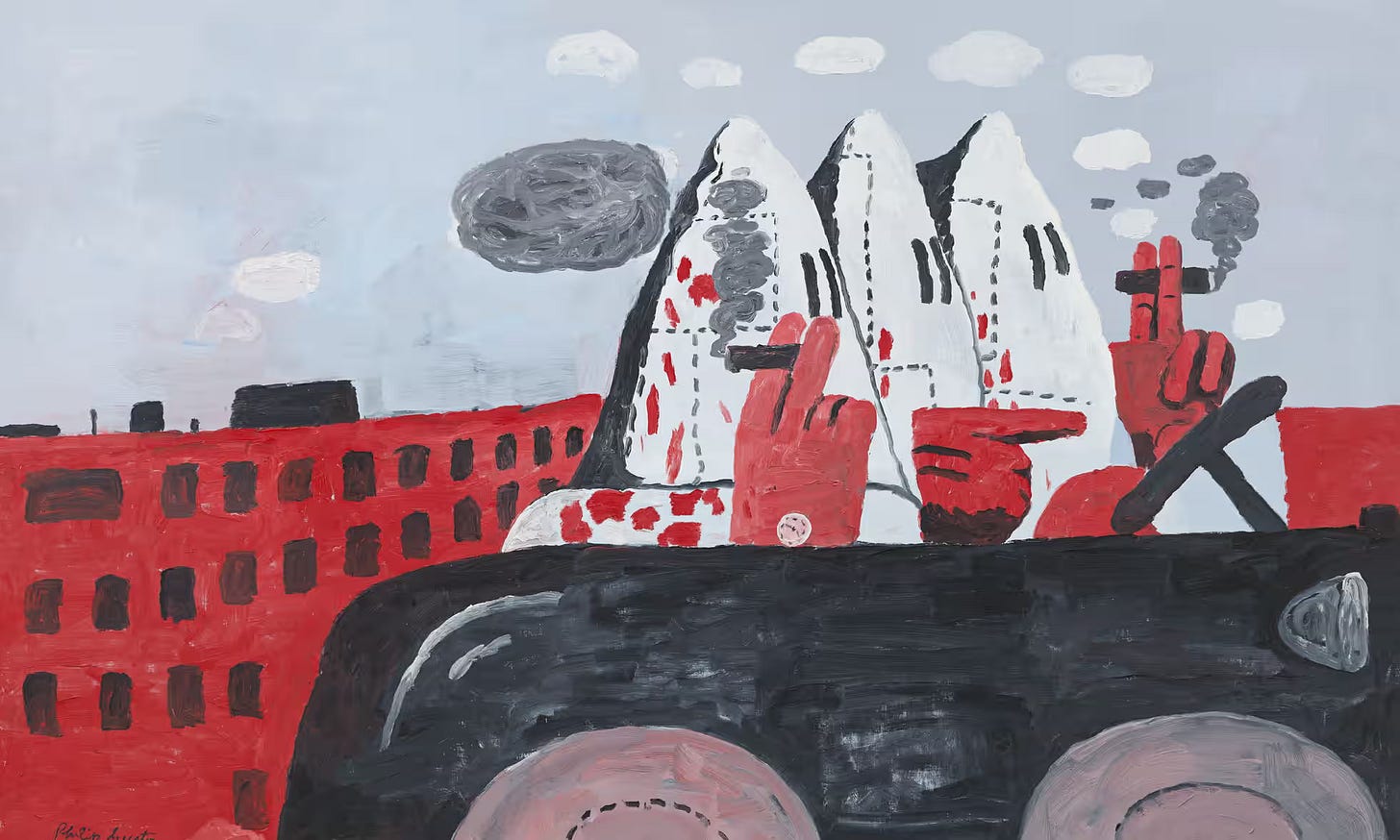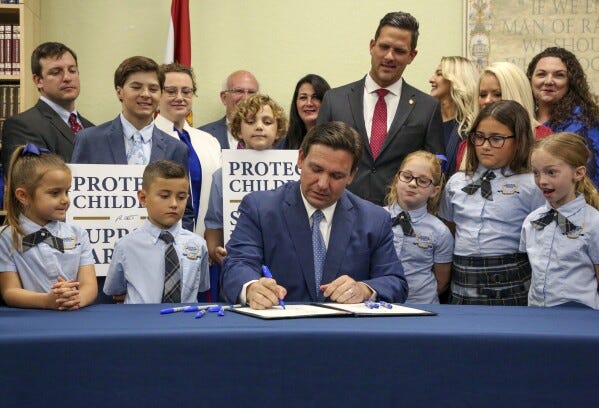The second Trump administration has brought with it a renewed attention by artists of all stripes as to what kind of art we should be making. I’ve noticed on my bluesky timeline, and in conversations with friends, a renewed feeling of pressure—mostly self-generated—to make work that Speaks To The Moment. If it doesn’t, goes the thinking, then what good is it? This is an emergency after all, a far worse one already than the last Trump administration, and even were it not, there’s the war on Palestine and the global climate crisis and any number of other big ticket items that should be the subject of our work. A related line of inquiry goes to whether or not the creating of art—particularly if it doesn’t speak directly to the current crises—is worth doing.
I think it is. But rather than offer any platitudes on this front, I want to instead discuss my experiences over the past decade of writing books, and how this has informed my perspective. I offer this not to tell you what to do, but rather to tell you what I have figured out for myself in hopes that it helps you do the same.
I am closing in on the end of a draft of my new book The Perfect Moment (look for it summer of 2026!) It’s a history of the first culture wars of the 80s and 90s, and, while it does not mention contemporary politics at all, it was absolutely inspired by and written in response to them. I first started thinking about writing this book when a retrospective of Philip Guston’s work was postponed due to concerns that his use of Klan imagery was harmful to viewers.
That Guston was a Jew who had had an early masterpiece destroyed by the Klan didn’t seem to matter. (The show eventually opened with the offending paintings relegated to a room surrounded by warnings and mental health language, as if they were somehow diseased and needed to be quarantined, as if the museums themselves were agreeing that a painting’s only role is to look nice on a wall.)
The day the delay was announced, I wrote my editor at Bloomsbury and said I wanted to write a book about the NEA-4, a group of performance artists who sued the government over censorship of their work. I wanted to remind my (almost all well-meaning) allies on the left about the importance of defending free expression, especially by artists. As I began working on the proposal, however, current events again intervened, this time in the person of Ron Desantis.
The Desantis campaign against free expression in every corner of Florida’s public life was not only obviously more dangerous, more extreme, more reactionary, and more successful than anything going on in the museum world, it also followed almost exactly the playbook that Jesse Helms and his allies used over the course of the culture wars. And so, as I became interested in those tactics and how they played out, the book changed. Instead of being just about the NEA-4 case, it widened out and became about the culture wars from 1988-2000, and the ongoing war-by-other-means between the religious right and American artists. As with today, left-wing censoriousness played two different roles in this story. The first was that a series of relatively minor efforts to limit expression from the left helped open the door to far more dangerous attacks from the right, and the second was that the specter of left wing censoriousness, mythically inflated by right wing figures and gullible members of the press, helped muddy the picture of what was really going on. In the early nineties, it was fighting “political correctness” (a term that started as a left-wing in joke) which helped far right figures like Rush Limbaugh position themselves as champions of free speech. Today, of course, it is “wokeness.”
So yes, the point of view I bring to The Perfect Moment is of course shaped by the world I am living in—how could it not be? The events of the book mirror very directly (but on a much smaller scale) much of what has gone on during the time I have been writing it.
Does this feel like I’m striking a blow on behalf of the righteous? Honestly? No. For the most part, it sucks to write something that turns out to be directly related the worst headlines you read every day with your morning coffee. Why? Because there is no escape. When I quit out of the various apps that bring the horrors of the world to my face and close my eyes and do my morning mindfulness exercises and then open the google drive where all of my Perfect Moment files live… I get put right back into the shit. It’s a loop, and my mind keeps running around it. Not fun… at least for my mental health.
In other words, the fact that I may be making something that “speaks to the present moment” or whatever creates two different craft challenges. The first is that the reader can’t know that I often felt like a chewed over tennis ball while writing it. The writing has to snap. It has to be exciting, compelling to read, fun, shapely, affecting, etc. The way I feel while writing it should not be at all relevant to the end result.
But the other craft issue is that The Perfect Moment is a work of cultural history. It is not a polemic. It is not a work of commentary. My job—any historian’s job—is to illuminate the past. I have a point of view on the events of the book—one that sometimes has clarity, sometimes has conflict, sometimes is ambivalent, at other points certain— and that point of view will be present because I want to be as honest with my readers as possible. But in order to do my job well, I have to shove the headlines out of my mind, and get back to the basics, the who/what/when/why/how of it all.
I want to reiterate this: The job of the historian is to illuminate the past. It is not to create an extended analogy by which you can convince people to agree with your politics or whatever. (That is the job of the historian when writing essays to help promote the book in advance of its release.) There are parts of the story of TPM that I find challenging to my own assumptions, and they are definitely going on the page. This was true of The Method as well.
In other words: the things we want to create are shaped by the world we live in. But sometimes the connections between the two can be dangerous to the project itself, unless that project is a work of direct, purposeful commentary. Most art is *not* works of direct purposeful commentary! And that’s okay.
The Perfect Moment is my third book. My first, The World Only Spins Forward: The Ascent of Angels in America was sold to Bloomsbury prior to Trump’s victory in 2016, but Dan Kois and I started work expanding the article on which it was based largely after the election. That work felt very different. Why?
Well, first off, because we were telling the story of the creation (and recreation) of a brilliant work of political art, and second because it was an oral history, so our *subjects* did the commenting on present day realities for us. I don’t think we ever asked a single question about Trump. He came up anyway! Of course! I mean, fucking Roy Cohn is a character in the play! That was a really ideal scenario. I got to have fun working with a great collaborator making a book about a work of art that brought us great solace in a time when that solace was needed by the authors as well as everyone we talked to. It was a story that helped me have some (real, non-BS) hope. My current book ends with Clinton betraying the left. Not super hopeful!
The Method meanwhile was a whole different bag. That book isn’t topical in any way, but the deeper transformation of our politics into something that is made up of actors rather than officials and images rather than reality lurks in the background throughout. The final third was written during the first six months of the pandemic. This turned out to be great for me because it provided a safe haven for my consciousness. Anytime the news got to be too much, I could always put on a Paul Newman movie for research.
But I did have many a therapy session where I wondered if this book I was doing mattered at all. It seemed that the world was literally ending, and here I was writing a book about… acting? I got through that by realizing two important things.
The first is this: saving the world is not the artist’s job. I’ve long been suspicious of people who talk as if it is. Art is the dream life of the self, and the collective unconscious of the culture. That is its job. And there’s a lot of ways to do that job. Delighting is one. Comforting another. Challenging a third. Confronting a fourth. I mean there’s many, many ways to do this. And many works of art do several at once. (If you want to read a good book on that subject, Rita Felski’s Uses of Literature is brilliant).
The best way for me to affect change in the world is to volunteer and donate to organizations seeking to change the world. Not to write cultural history books.
My second realization was this: I have no control over how my work will be received. No one does. And thus I do not get to control or dictate what is “relevant” to people’s lives and struggles or what they (and the culture) “need.” All I can do is put my whole self into the work and make it as good as it can be.
It is great to make really topical work that speaks to the immediate moment. i spent much of 2015 directing Mike Daisey in a solo show about the election that changed literally every night. It was thrilling—although watching every televised appearance Trump made in 2015 nearly killed me. Great works of art flow from this impulse. Just look at The Normal Heart if you don’t believe me.
But if that is not where your interests lie, and if you have something else you’re burning to make, I say make that. If you make the whole of yourself available to it in its creation it will be informed by the world around you no matter what. And if you try to force present-moment topicality into something, it will likely make the work more crude and less interesting.
Besides, making art takes time, and no one knows what the future holds. A thing that feels essential and relevant today may be totally passé and irrelevant by the time it is finished. Instead, let’s make the work we feel called to make, and make it as good and true as we can.






thanks, Isaac- related thoughts...https://michaelrohd.substack.com/p/artists-in-2025-democracys-signals?r=xr2be